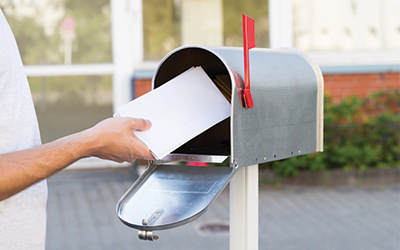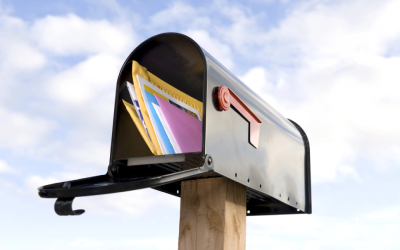When the question is asked, “What contributes to direct marketing success?”, the discussion quickly turns to data quality. How is that achieved? The answer is data hygiene, which requires active effort. Without it, data quality declines. Strategy, content and offer still matter, but campaigns are dead in the water without clean data. Why a data hygiene update now? In an “average” year, direct marketing data might decay at a rate of about 2% a month, or over 20% a year. In high turnover sectors (like high tech) that could run as high as 70%. Bad data has been estimated to cost businesses over $3 trillion a year. Then 2020 happened.
The Need For Data Hygiene Has Gone Viral
The combination of COVID-19, plus the recession it spawned, means now is the time for a data hygiene update. The usual rules of data decay and hygiene are being tested. Some effects of COVID-19 on life & business:
Remote Work – One of the most noticeable phenomena stemming from the pandemic is the onset of remote work (where possible). A Gallup Poll found the high point of the initial wave was 51% of respondents reporting they “always” worked remotely. This has since subsided to 31% in September 2020, while 25% report doing so “sometimes”. In any case, that’s a lot of people in the workforce who may be key decision-makers that marketers want to reach.
Business Failures/Closings – The near-total shut down of the U.S. economy beginning in March, combined with the shut-in of the population, proved the death knell for thousands of businesses. By July nearly 420,000 small businesses had failed since the start of the pandemic, the number of failures typically seen in an entire year. Chapter 11 bankruptcies have been up 15-50% year over year from March to August. (Brookings, The Hamilton Project – Fact 2)
Entities that offer vital services are also closing. The New York Times reported that a 2020 survey conducted by The Physicians Foundation found 8% of physicians have closed their practices due to COVID-19. This could translate into about 16,000 practices. Another 4% expressed that they expect to close within the year. Hopefully, these caregivers will be able to find situations allowing them to care for patients during and after the pandemic. Comprehensive healthcare databases could make it possible to stay in touch with them as their career plans evolve.
Employment – At any given time, people are changing jobs, and losing them. In a 2018 Statista survey, 51% of respondents said they changed jobs every one to five years. At the same time there is also the unemployment rate. In recent years, “full employment” described a jobless rate of between 4 and 6.4%. Even then, millions of people are out of work. When the pandemic hit, the unemployment rate spiked to 14.7% in April 2020 before declining to a still-elevated level in 6.9% in October 2020.
According to Moody’s it is reckoned that payrolls generally peaked in February 2020. The deepest loss of jobs has been in restaurants and bars, where payrolls shrank by 2.1 million or 16%. Next biggest was the 1 million jobs cut from public sector education, or about 9% of that category’s February tally. The other big job losers from February through October include:
- Entertainment and recreation (down 732,000, or 29%)
- Lodging (down 656,000, or 31%)
- Manufacturing (down 621,000, or 5%)
- Private education (down 376,000, or 9%)
- Commercial airlines (down 125,000, or 24%)
Rare examples of growth during that period include:
- Federal government jobs (up 124,000 new jobs or 5%)
- Building materials stores (up 94,000 jobs or 7%)
- Food stores (up 55,000 or 2%)
Moving/Mobility – According to U.S. Census Bureau figures going back to 1948, about 40 million people change addresses annually. About 9.8% of the population did so in 2019, dipping below 10% for the first time. Yet, the dislocating effects of COVID-19 have led to a situation where a PEW Research survey found 22% of respondents reporting that either they, or someone they know, relocated due to the pandemic. That alone can wreak havoc on a database. Ordinarily, relying on the National Change of Address Database (NCOA) database would help mailers keep track of recipients. However during the pandemic, many who are filing for temporary change of address status, either moving in with relatives or decamping to second homes, often to escape crowded urban areas. This is quite similar to forwarding, and can remain in force for up to 6 months.
Whether closing their businesses, losing their jobs, working remotely, or moving for one reason or another, these people include your own good customers. Those who have done business with you and who you definitely want to be able to find and keep. Remember the Pareto Rule as applied to sales: 80% of revenue comes from 20% of customers. To varying degrees, the cost to acquire new customers is many times greater than the cost of retaining existing ones.
Join The Fight Against Data Decay
The USPS is not the direct mail sanitation department. As mail volume for all classes decreases, and as the USPS workforce is reduced over time through attrition, the revenue stream and manpower required to somehow make up for deficiencies in addressee data is increasingly strained. Even while supporting the growing package delivery volume, in order to counter these fiscal challenges the Postal Service is asking the mailing industry to accept more responsibility for the management of mail that either requires additional handling and processing or is undeliverable.
Accurate data enables the USPS to deliver to the intended recipient (as in, name and address). When both are current and in good order, the USPS can successfully complete the delivery to a home or business. If anything is amiss, such as an incorrect spelling, missing street, or as happens so often the recipient has moved, the mail piece could be Undeliverable-As-Addressed (UAA) mail and become another costly statistic. Such mail causes loss of time, effort and money for the Postal Service — and for you, the mailer.
You’ve Got Skin In The Data Hygiene Game
A thorough data hygiene update saves time and money. Two years ago the USPS changed the method for measuring Move Update compliance to a Census-based approach. Mailers have the opportunity to participate in a data-driven platform that streamlines the process of submitting, evaluating, and paying for mailings called Seamless Acceptance. As described by the USPS: “Seamless Acceptance automates the entry and verification of commercial mailings by leveraging electronic documentation, Intelligent Mail barcodes (IMbs), and information collected from handheld sampling devices and mail processing equipment scans.” As indicated in the description on the PostalPro site, participation is dependent on a mailer maintaining mail quality standards for one month.
NOTE: Move Update errors may not exceed 0.5 percent of a given mailing. If they do, the USPS will bill a monthly assessment of $.08 per piece.
To avoid penalties, mailers may perform their own Move Updates. The USPS has published a detailed Move Update Guide for doing this. It requires becoming familiar with the Mailer Scorecard. This is a way to determine if a mailing complies with the Address Quality Census Measurement and Assessment Guidelines. Implementing the best possible data hygiene is just good business. Alternatively, mailers can engage with a mailing list provider who can provide significant assistance in meeting these requirements.
Recipient data errors mean more work for everyone, from correction to re-sending or forwarding. Billions of pieces were either returned or forwarded to a new address in 2018. Pitney Bowes calculates the cost to businesses at up to $25 per piece of returned mail.
Good address change practices help mailers avoid sending mail to viable, potential customers but that can’t be delivered. Conversely, how about sending mail to recipients who can’t respond under any circumstances? That’s because they’re either deceased or in prison. Tens of millions of pieces are sent to people who are deceased. And many millions more are sent to prisoners. Your data provider can run your list through the merge/purge or suppression process and remove records for those individuals who are deceased or incarcerated.
A Data Hygiene Update Is More Important Than Ever
During, and in the aftermath of a pandemic-induced recession, your direct mailing can still succeed by running on clean data. When renting or buying mailing lists, always ask when the records were last updated. Monthly updates are a best practice for reputable list brokers – especially during volatile times.
Begin by asking about Delivery Point Validation (DPV). This is a process of verifying that an address is actually deliverable. Make sure the Coding Accuracy Support System (CASS) and NCOALink® are used, and how frequently. CASS certification allows direct mailers to improve the accuracy of the addresses on their list. The NCOA program is a database that contains the names of over 160 million individuals and companies that have changed addresses within the last four years. The DMA offers valuable wisdom on making use of NCOA Nixie reports to evaluate records. Further, mailers should make use of enhanced NCOA services such as ANKLink® and Ancillary Change of Address. This helps broaden your effort beyond what the USPS itself can provide to ensure deliverability.
Additional, but no less important data hygiene measures include removing duplicate and near-duplicate names, identifying non-marketable companies by DUNS number, and fixing incomplete or incorrect addresses using data append services. Merge/purge is always a worthwhile step when the goal is to create a list of unique names.
Taken together, the methods and tools described in this data hygiene update are an investment worth making for solid reasons. They ensure records are deliverable and more responsive for better ROI. They allow mailers to reduce waste and remain eligible for USPS discounts. They help mailings reach – and resonate with – their intended target audience, contributing to business success. The goal is to look back on 2020 and be able say with honesty that they did the best they could during a tough year.




